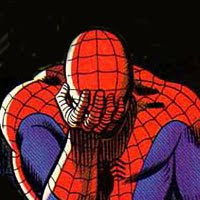A to Z Challenge - K is for...

...Kirby! Jack "King" Kirby is one of the single most important people in comic book history. Unfortunately, many people still haven't heard of him. I hope to rectify that here. Marvel Masterminds What do The Fantastic Four, Uncanny X-Men, Hulk, Thor and Iron Man have in common? You are correct if you said they are all Marvel comics. If you said they were all created by Stan Lee, you're only half right. The legend goes... Stan Lee would come up with ideas, basic outlines and tell them to Jack Kirby. Kirby would then go away and draw a comic book based on that idea. Once he was finished, he'd give the comic back to Lee who'd fill in the dialogue and speech as he saw fit. Often Lee would have no idea what he'd get back from Kirby and has been quoted as saying it was like doing a crossword puzzle, trying to figure out what story the pictures were telling him. Later, the idea of credit became the subject of bad blood between Kirby and Marvel






